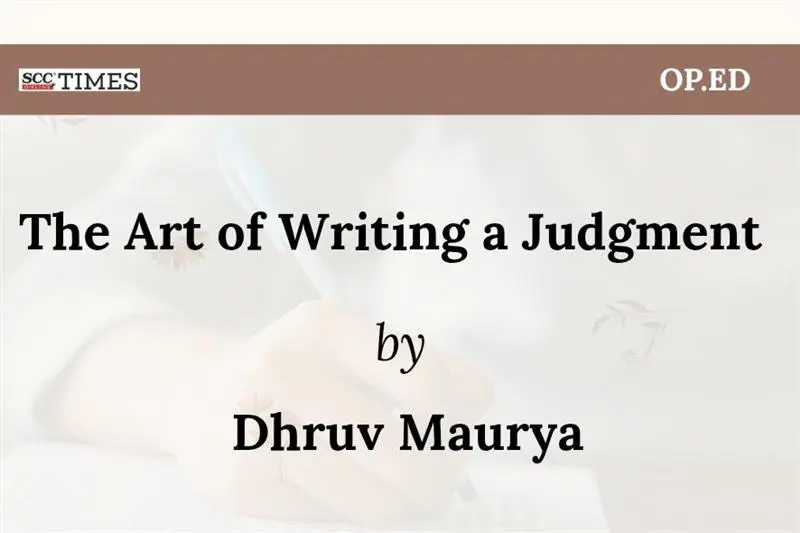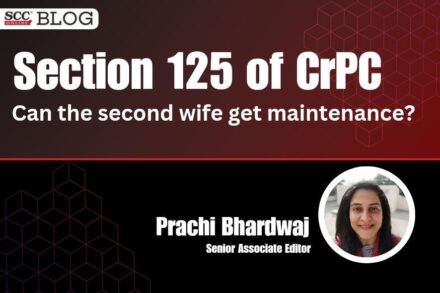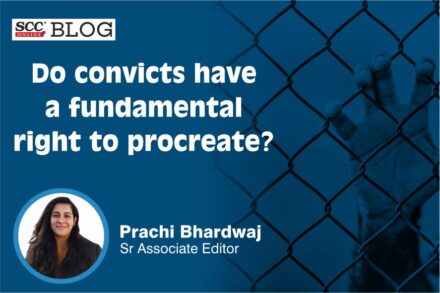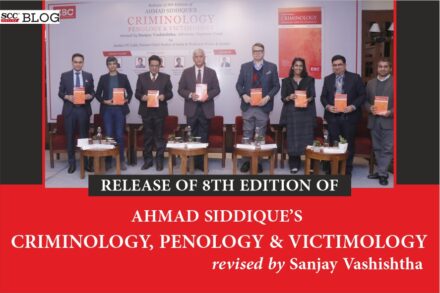Introduction
This research paper delves into the essential elements of a judgment, exploring the components that contribute to its legal soundness and efficacy. By examining the structure, content, and language of judgments, this study aims to provide insights into the critical factors that influence the quality and impact of judicial decisions. Ultimately, this research seeks to contribute to a deeper understanding of the judgment-writing process, with the goal of enhancing the quality and accessibility of judicial decisions for all stakeholders.
This paper is divided into three parts: first, it starts with what judgment actually is and then lists out the essential elements of a valid legal judgment; second, it provides certain examples of the contemporary practice of various trial courts and High Courts that do not adequately follow these essential elements in their judgments and how does it impact the effectiveness of the judiciary system ; and third, it elucidates certain other important features that are also considered essential to make a good legal judgment
Analysis
Essential elements of a judgment
Section 331 of the Civil Procedure Code, 19082 requires the courts to pronounce a judgment after hearing the case. A judgment, as defined by the law,3 is the Court’s final decision that is officially announced in open court to everyone involved in the case and to the public.4 This formal announcement is a crucial legal step that must be conducted with proper legal procedures.5 Once the case is finished being heard, the Court will announce its decision publicly, either immediately or at a later date after providing sufficient notice to the involved parties or their legal representatives.6
A common confusion arises when everything said by the Judges or the Court is understood as a judgment. It is important to resolve this confusion because a judgment serves as a principle for the subsequent cases. The decision announced in Court must reflect the Court’s final thoughts at the time of pronouncement.7 While the specific method of announcing the decision is not critical, it must be done formally in open court.8 Regardless of the method, the announcement should clearly convey the Court’s decision at that time. This is important because it is the first official action the Court takes regarding the case after hearing the arguments. Even if a court has multiple Judges, there is only one judgment, not one judgment per Judge. When Judges share their individual views during a court session, it is still a single judgment that forms the basis for the final court order. The key takeaway here is that there can only be one judgment for a case. Not everything that the Court says can be termed as a “judgment”.
As said earlier, judgment has certain essential elements which are necessary to make a judicial decision called a judgment. Rule 4(2) of Order 209 mentions all the essential elements of a valid judgment. These are, namely: a concise statement of the case, the points for determination, the decision thereon, and the reasons for such decision. In suits in which issues have been framed, the court should state its findings or decision, with the reasons for the findings, upon each separate issue.10 The last paragraph of a judgment must state in precise terms the relief granted by such judgment.11
Concise statement of the case
The law requires a concise statement of the case by the court mentioned in the judgment. This requirement makes it convenient for laymen who are not familiar with the legal etymology to understand the judgment. Conciseness is essential to minimise the burden on those reading the judgment. Producing an excessively long judgment by reiterating factual matters is both time-consuming and burdensome.12 Moreover, such judgments are inconvenient and often frustrating for readers.13 The factual account is a crucial component of the judgment. The accuracy of the judgment hinges on a correct and comprehensive narration of the facts.14 When presenting the facts, a Judge is not obligated to replicate the plaintiff’s or defendant’s wording or organisational structure.15 The specific format for presenting facts can vary from case to case. While simpler cases require straightforward factual summaries, more complex cases demand detailed and carefully crafted factual narratives due to their increased significance in determining the outcome.16 Therefore, the judgment must include a precise summary of the material facts.
Points for determination
Laying down the points for determination is another crucial element of a judgment. By clearly outlining the specific issues to be decided, courts can effectively confine their judgment to the matters in dispute that are raised by the parties’ claims and defences.17 It is to be noted that the issues need to be broad enough to cover all the sub-issues. These outlined points for determination put a limit on the parties and the Court as well to stay within the ambit of the questions to be decided in the given case. For instance, in Kaniz Fatima v. Shah Naim Ashraf18, the Court held that it cannot delve into and make a determination on a particular point unless it is specifically raised as an issue in the case, even if that point seems crucial for a correct decision. This is again important for reducing the time consumption of the court to not bother about the irrelevant issues which are not directly concerned with the matter in issue.
Specific decisions
Coming to the third essential element of a judgment, the Court is required to give its decision on each issue. Rule 2 of Order 1419 also mandates the courts to state their decision on each issue separately. The decision on each relief allowed by the court needs to be as specific as possible and not just in general terms.20 The Court cannot withdraw its duty to give a decision after hearing the case. The decision can be wrong or unjust which may be appealed in higher courts but the Court has to make a decision. It might seem odd to emphasise the importance of correct court decisions, but it is crucial to understand that within our legal system, a decision can only be deemed right or wrong in relation to the specific case at hand. Determining whether a decision accurately reflects the law’s application to past events is challenging because the concept of “law in operation” is abstract.21 Even if we do not doubt the law’s existence, its effects are difficult to measure independently. For those involved in a case, the Judge’s decision is final, unless appealed and overturned. While we tend to view unappealed decisions as correct, especially if upheld by higher courts, the reality is that such judgments are merely opinions on matters that cannot be definitively proven. There is no absolute way to verify whether a decision is truly right or wrong.22 The main point here to understand is that every party has a right to get a valid decision whether it is in its favour or not. It does not matter whether a decision is flawed to whatever extent (though it can be appealed) but the Court is bound to make a decision in the judgment.
Reasoning for decisions
A Court’s decision and the explanation supporting it are equally crucial components of a judgment.23 Recording the reasons for a decision that can be appealed is crucial for several reasons. An appellate court needs to understand the basis of the original decision. Without these reasons, the appellate court is burdened with having to re-examine the entire case from scratch, making its task significantly more difficult.24 Therefore, without reasons, a judgment is incomplete and cannot be challenged effectively. It is on the basis of the reasons which support a judgment that the same can be challenged in an appeal.25 Since reasons are vital for the appeal process, their absence renders a judgment flawed and violates fundamental fairness principles of natural justice. Recognising this, the Supreme Court in the country has mandated that all courts must provide explanations for their decisions.26 Failing to provide reasons for a decision is equivalent to denying justice.27 Reasons serve as a clear connection between the Court’s thought process and the ultimate decision reached in a case.28 In Ram Phal v. State of Haryana29, the Supreme Court held that providing clear explanations for decisions has been recognised as a fundamental principle of fairness and a necessary check on those in positions of authority. It reflects the sense of a common person of what is right and just. Reasons are considered the core of any decision and are fundamental to ensuring openness and impartiality in the decision-making process, in addition to being a basic element of fairness principles.30
Contemporary practice of lower courts in giving reasons
This element of a judgment is often in contention because of the lower courts’ inability to elucidate the reasoning behind their holdings. It is not uncommon when trial courts or high courts do not provide adequate reasoning for their decisions. For instance, in Shakuntala Shukla v. State of U.P.31, the Supreme Court lashed out at the High Court’s impugned judgment and orders32 because they suffered from a fundamental lack of clarity in distinguishing between the Court’s own findings and reasoning and the mere submissions presented by the parties involved. Moreover, it entirely failed to acknowledge or address the arguments advanced by the prosecution. It is insufficient for a decision to be merely accurate; it must also be grounded in sound reason, and logical coherence, and be readily comprehensible. A well-crafted judicial opinion should not only illuminate the Court’s decision-making process in a compelling manner but also convincingly demonstrate the justice and wisdom of the verdict. The manner in which a court articulates its decision is just as crucial as the substance of the decision itself.
Another example is Municipal Council v. Eknath33. In this case, the lower court issued a brief order simply stating “allowed”, and the case proceeded based on this vague decision. The High Court reprimanded the lower court and held that it should have provided a detailed explanation for granting permission to file the suit, which would have clarified the matter for both the higher court and the parties involved.
The Supreme Court, through Swaran Lata Ghosh v. H.K. Banerjee34, deliberates on the importance of reasoning in the judgment. A Judge must not only reach a fair decision but also clearly explain the “ultimate mental process” behind it unless specific rules or practices allow otherwise. A sound judgment, especially in complex cases, requires clear and compelling reasons. A mere order without explanation is insufficient. Providing reasons ensures the decision is based on careful consideration, not whim, and that the case was decided according to law. Parties have a right to understand the basis of a decision, particularly when it can be appealed. Appellate courts rely on these reasons to assess the accuracy of the facts, the correct application of law, and the overall fairness of the decision.
The key takeaway here is that a party has a right to be given a reason for any decision taken by the Court. The Court has the obligation to give compelling reasons to justify its decision to uphold the principle that justice is not only served but also seen to be served. However, certain problems are still there because even today, after multiple Supreme Court rulings, trial courts and even High Courts fail to provide adequate reasoning behind their decision in any matter at hand. This leads to an arbitrary system of law where the Court is at a hierarchy to take any decision it feels like. It is not the case that the courts are expected to give reasons for everything they say. A Judge is not required to provide reasons for decisions beyond those explicitly stated in the judgment or order.35 Nonetheless, there is an immediate need for the lower courts to understand the importance of reasoning in their judgments.
It is often confusing sometimes that certain other factors such as the signature of the Judge on the judgment, are also considered as an essential element to a judgment apart from the four essential elements mentioned earlier in the paper. But it is to be noted that judgments that have been pronounced in court but not yet signed by the Judge are still legally valid and enforceable, just as if they had been signed.36 The act of signing a judgment is merely a procedural step that comes after the decision has been made. The judgment becomes legally effective immediately upon delivery and does not depend on the Judge’s signature.37
Other essential features for a judgment
Apart from these essential elements, a judgment should have certain other features as well which are more or less equal in weight to these elements. The Supreme Court, in CIT v. Saheli Leasing and Industries Ltd.38, laid out the guidelines for writing judgments. It held that a judgment or order should be concise and relevant to the case, clearly stating the legal basis for the decision. After drafting, it should be carefully reviewed for completeness. The judgment should be well-structured and engaging, avoiding excessive legal citations. Key precedents should be cited, but excessive citations can be confusing. The Judge should consider the reader’s perspective, using clear and straightforward language. Judgments should be delivered promptly to avoid delays and public dissatisfaction. All these points are particularly relevant for improving the writing style of a judgment.
Lord Burrows, Justice of the Supreme Court of the United Kingdom, in the Annual Conference of Judges of the Superior Courts in Ireland in 2021, argued that there are 3Cs (clarity, coherence, and conciseness) that are essential for a good legal judgment.39 Further, he also says that a judgment is intended for a diverse audience. It should be written to effectively communicate with both those directly involved in the case and the general public. This argument was also pointed out by Sir Jack Jacob in his Hamlyn Lectures40 that justice is not solely for those directly involved in court cases. Litigation is essential for upholding the rule of law and ensuring justice for the broader public who may never step foot in a courtroom. To achieve these goals, the legal system should sometimes encourage litigation and appeals, especially when important legal questions are at stake. The court system serves multiple purposes, including providing justice for individuals and contributing to the overall legal framework. Therefore, it is the duty of the courts to uphold this purpose by writing judgments that contain all the essential elements and the abovementioned factors as well.
Conclusion
There is no doubt that there are certain elements that make a legal document a judgment. The absence of any of these elements leads to multiple issues, thereby, making the necessity of these elements of utmost importance in the judgment. Through the paper, it has been argued that there have been multiple instances in which the lower courts and High Courts have not taken these elements as important and have not included these in their judgments. Supreme Court, in multiple cases, have constantly criticised this practice of lower courts and High Courts for not including these elements in their judgments.
The purpose of this paper was to illustrate the importance of judgment-writing and putting these elements in a judgment is the first thing that the Judges need to keep in mind while writing a judgment. Further, there needs to be crystal clarity in the judgment because, as argued earlier, the judgments are meant not only for individuals concerning the case at hand but also public in general who will read it for various purposes. The art of judgment-writing involves various principles but the fundamental one lies behind the idea that the judgments are also meant for people in general and not only for specific individuals related to the case.
*Student at National Law School of India University, Bengaluru. Author can be reached at: dhruv.maurya@nls.ac.in.
1. Civil Procedure Code, 1908, S. 33.
2. Civil Procedure Code, 1908.
3. Civil Procedure Code, 1908, S. 2(9).
4. Surendra Singh v. State of U.P., (1953) 2 SCC 468, para 10.
5. Surendra Singh v. State of U.P., (1953) 2 SCC 468, para 10.
6. Surendra Singh case, (1953) 2 SCC 468, 196-97; Nirankar Nath Wahi v. Vth ADJ, (1984) 3 SCC 531, 537; Anil Rai v. State of Bihar, (2001) 7 SCC 318.
7. Surendra Singh case, (1953) 2 SCC 468, para 11.
8. Civil Procedure Code, 1908, Or. 20 R. 1.
9. Civil Procedure Code, 1908, Or. 20 R. 4(2).
10. Justice C.K. Thakker (C.K. Takwani), Civil Procedure Code (8th Edn., Eastern Book Company) p. 407; K. Kannan, Mulla’s The Key to Indian Practice (A Summary of the Code of Civil Procedure) (13th Edn., Lexis Nexis, 2023) p. 135.
11. Justice C.K. Thakker (C.K. Takwani), Civil Procedure Code (8th Edn., Eastern Book Company) p. 407; K. Kannan, Mulla’s The Key to Indian Practice: A Summary of the Code of Civil Procedure (13th Edn., Lexis Nexis, 2023) p. 135.
12. Kalthuri Mallikarjuna v. State of A.P., 1995 SCC OnLine AP 67, para 52.
13. Kalthuri Mallikarjuna v. State of A.P., 1995 SCC OnLine AP 67, para 52.
14. Kesavan Janardhanan Plappalli v. Narayanan Janardhanan Plappalli, 1952 SCC OnLine Ker 34, para 9.
15. S.D. Singh, Judgments and How to Write them (Eastern Book Company, 2018) p. 28.
16. S.D. Singh, Judgments and How to Write them (Eastern Book Company, 2018) p. 28.
17. Roop Chand v. State of J&K, 1999 SCC OnLine J&K 14, para 3.
18. 1983 SCC OnLine All 17, para 10.
19. Civil Procedure Code, 1908, Or. 14 R. 2.
20. State of Bihar v. Secretariat Press Ministerial Staff Union, (2002) 9 SCC 68, para 8.
21. J.A. Jolowicz, On Civil Procedure (Cambridge University Press, 2000) pp. 85-86.
22. J.A. Jolowicz, On Civil Procedure (Cambridge University Press, 2000) pp. 85-86.
23. Roop Chand case, 1999 SCC OnLine J&K 14.
24. Maya Devi v. Raj Kumari Batra, (2010) 9 SCC 486, para 30.
25. Godabarish Satpathy v. Brundaban Mishra, 1983 SCC OnLine Ori 18, para 11.
26. Roop Chand case, 1999 SCC OnLine J&K 14.
27. State of U.P. v. Munshi, (2008) 9 SCC 390, para 5; Union of India v. Jai Prakash Singh, (2007) 10 SCC 712, para 7.
28. State of U.P. v. Munshi, (2008) 9 SCC 390, para 5; Union of India v. Jai Prakash Singh, (2007) 10 SCC 712, para 7.
29. (2009) 3 SCC 258, para 6.
30. Victoria Memorial Hall v. Howrah Ganatantrik Nagrik Samity, (2010) 3 SCC 732, para 41; Raj Kishore Jha v. State of Bihar, (2003) 11 SCC 519, para 19.
31. (2021) 20 SCC 818, para 9.
32. Swami Nath Yadav v. State of U.P., 2018 SCC OnLine All 5465; Jhingoor Bhar v. State of U.P., 2018 SCC OnLine All 6007.
35. Khanapuram Gandaiah v. Administrative Officer, (2010) 2 SCC 1, para 13.
36. Phool Kumari v. Nandu Ram, 2002 SCC OnLine HP 32, para 28.
37. Vinod Kumar Singh v. Banaras Hindu University, (1988) 1 SCC 80, para 8.
38. (2010) 6 SCC 384, para 5.
39. Lord Burrows, “Judgment-Writing: A Personal Perspective” (supremecourt.uk, Annual Conference of Judges of the Superior Courts, Ireland, 20-5-2021).
40. Jack I.H. Jacob, The Fabric of English Civil Justice (Hamlyn Lecture Series, Cambridge University Press, 2018) p. 285.







This article is very useful to the person,s related in judicial system.